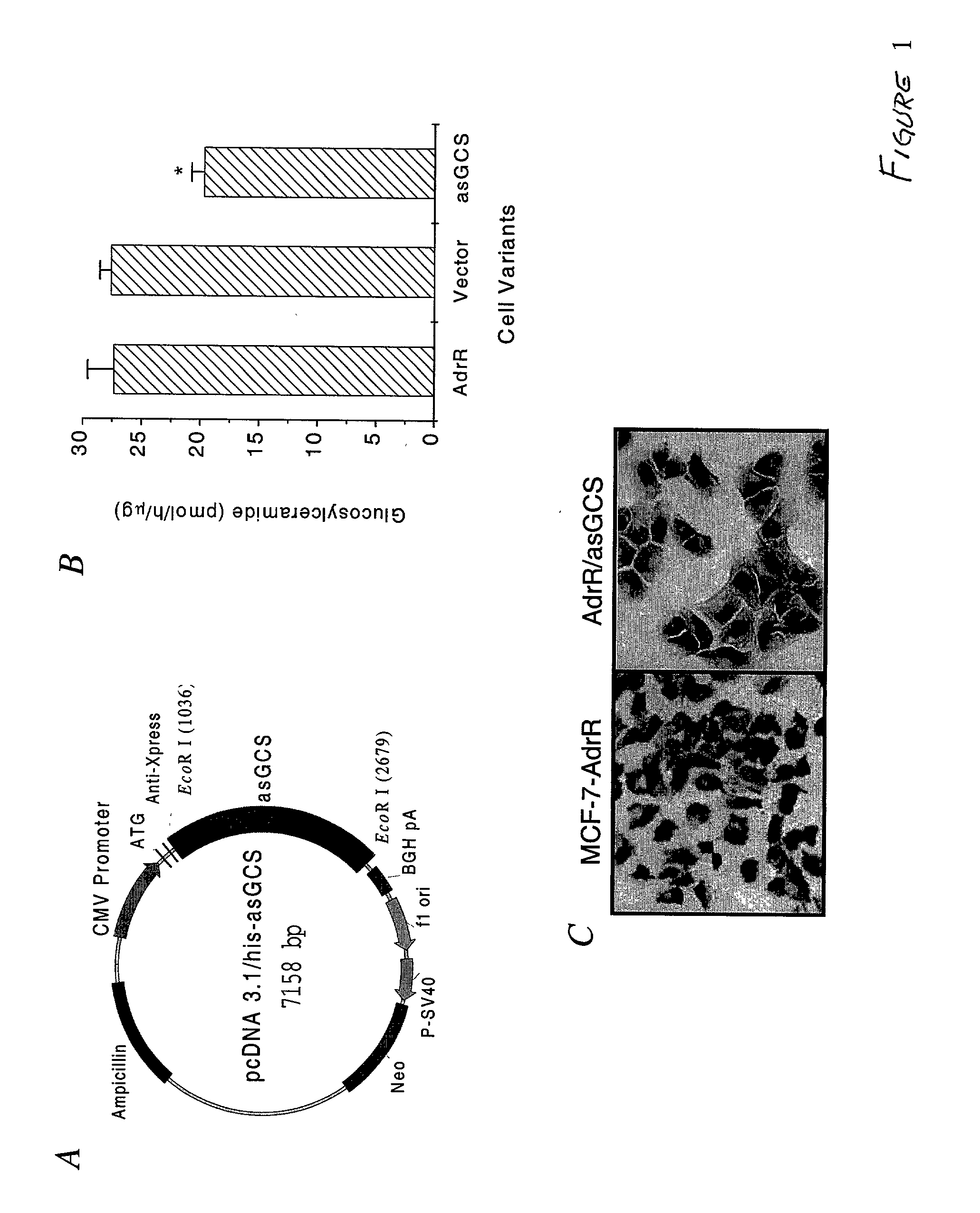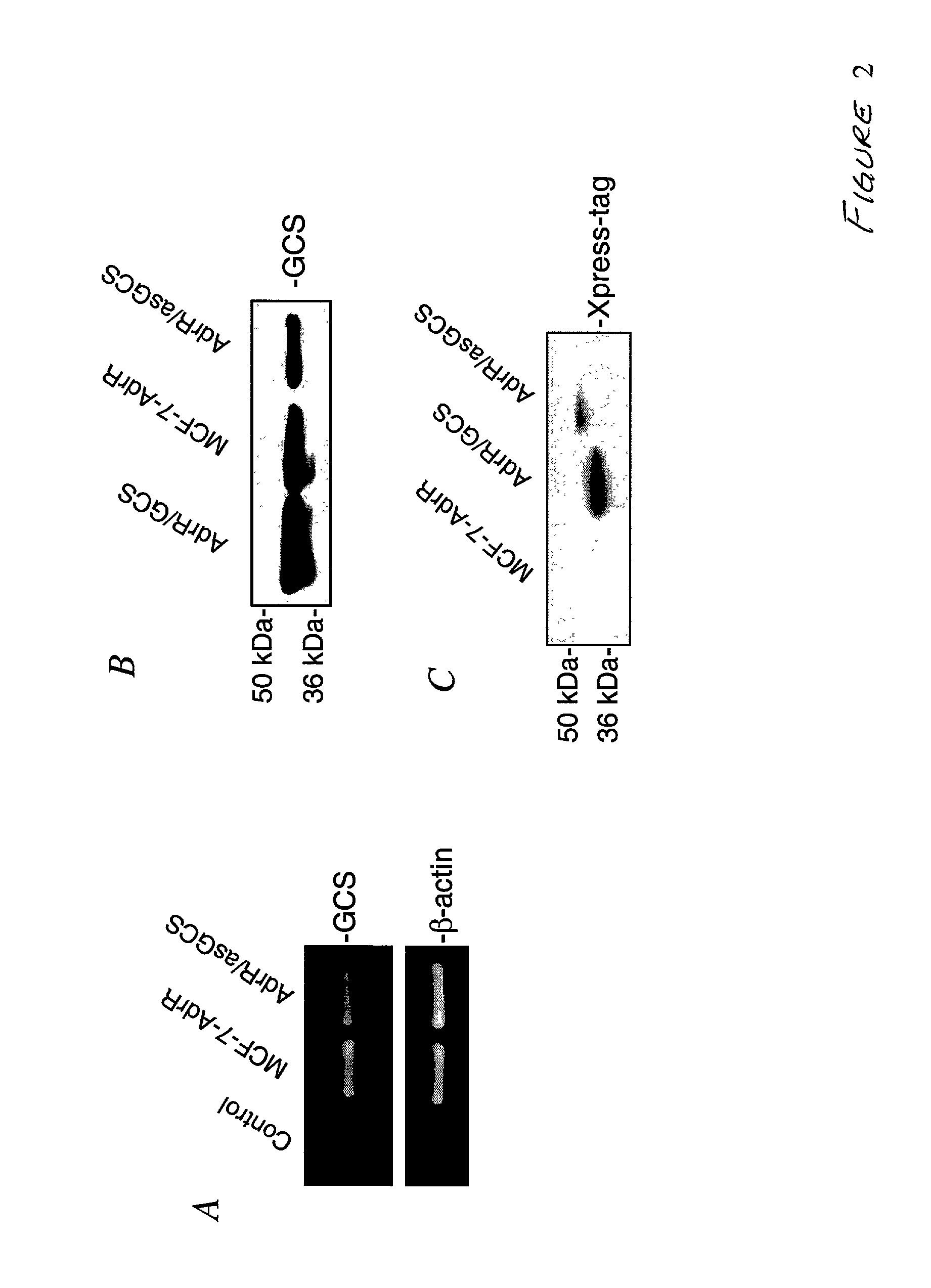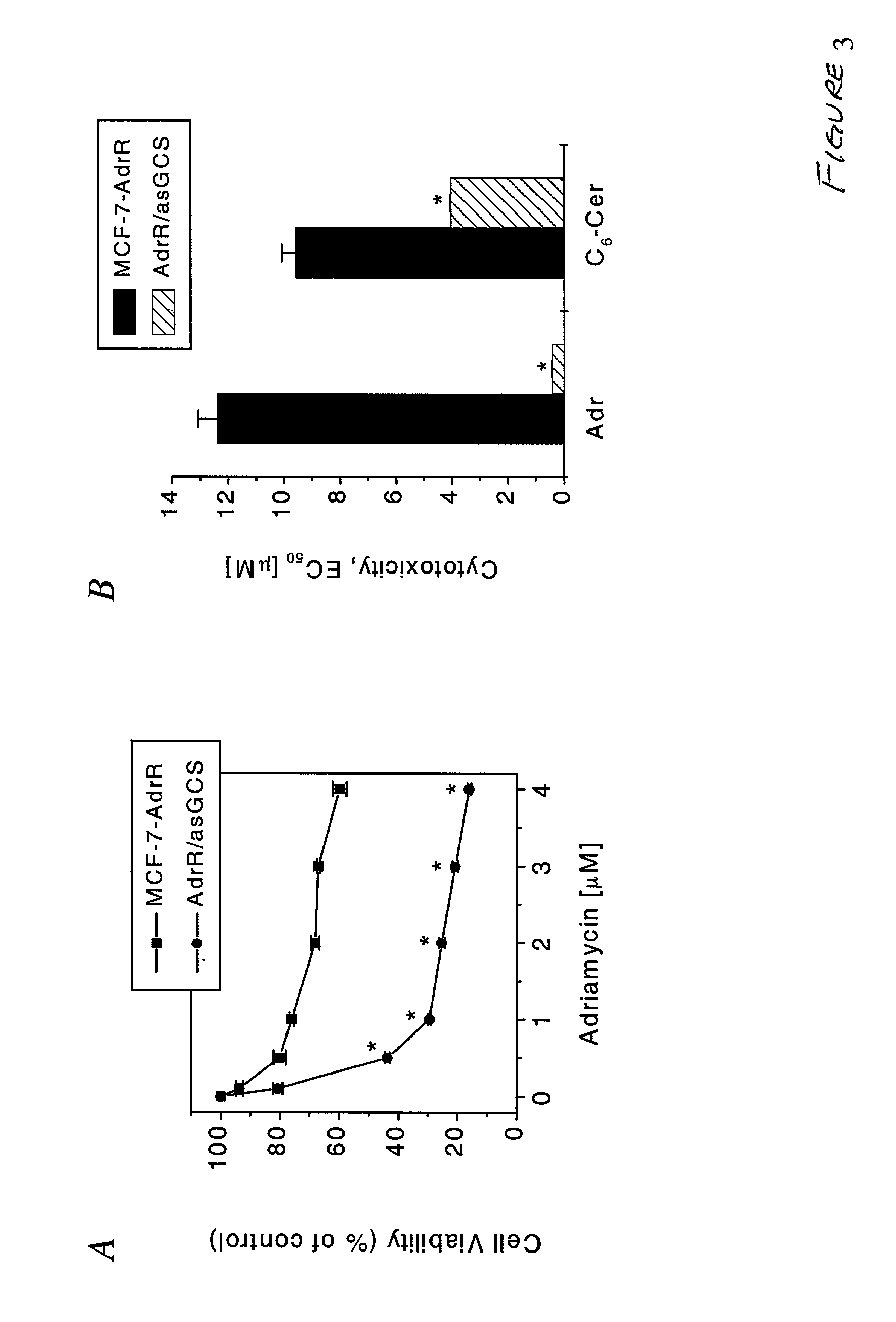Methods of reversing drug resistance in cancer cells
a drug resistance and cancer cell technology, applied in the direction of transferases, peptide/protein ingredients, drug compositions, etc., can solve the problems of limited clinical impact and frequent ineffectiveness of chemotherapy, and achieve the effect of reversing drug resistan
- Summary
- Abstract
- Description
- Claims
- Application Information
AI Technical Summary
Problems solved by technology
Method used
Image
Examples
example 1
7.2 Example 1
Expression of GCS Antisense
[0092] The structure of pcDNA 3.1 / his A-asGCS is shown in FIG. 1A. The GCS antisense was cloned into the EcoR I site, just down stream from the anti-Xpress tag sequence in pcDNA 3.1 / his A. This plasmid was introduced into MCF-7-AdrR cells by calcium phosphate coprecipitation. G418 was used to select transfectants. It was found that the number of G418-resistant clones in MCF-7-AdrR asGCS transfected cells was much lower than in MCF-7-AdrR cells transfected with pcDNA3.1 / his A vector (54 / 106 vs. 251 / 106). G418-resistant clones were further selected by measuring GCS activity using the cell-free radioenzymatic assay. In all, fifty-four G418-resistant clones of MCF-7-AdrR asGCS-transfected cells were obtained, and we identified one clone that exhibited a stable 30% decrease in GCS activity (FIG. 1B). Compared with 27.4.+-.2.3 pmol GC synthesized by MCF-7-AdrR parental cells, GCS activity in MCF-7-AdrR / asGCS was decreased to 19.7.+-.1.1 pmol GC (FIG...
example 2
7.3 Example 2
GCS-antisense Transfected Cell Response to Adriamycin
[0095] Previous work from our laboratory revealed that overexpression of GCS elicits adriamycin resistance (Liu, Y. Y.et al., (1999) J. Biol. Chem. 274, 1140-1146; U.S. Ser. No. 09 / 201,115 to Cabot, herein incorporated by reference). After transfection of GCS antisense, adriamycin was used to assess the influence of antisense on cellular response to anthracyclines. Parental and antisense transfected cell lines were treated with increasing concentrations of adriamycin for a three day period. FIG. 3A shows that MCF-7-AdrR / asGCS cells, compared to MCF-7-AdrR cells, were markedly more sensitive to adriamycin. At concentrations of 0.5 .mu.M and higher, survival of MCF-7-AdrR / asGCS cells was significantly lower than MCF-7-AdrR cells (p<0.0001, FIG. 3A). The amount of drug provoking 50% cell death (EC50) was determined. The EC50 of adriamycin decreased 28-fold in MCF-7-AdrR / asGCS cells (0.44.+-.0.01 vs. 12.4.+-.0.7 .mu.M, p<...
example 3
7.4 Example 3
GCS-antisense Transfected Cell Response to Adriamycin
[0096] To further elucidate the dynamics of ceramide metabolism in drug sensitivity, ceramide generation was measured in the two cell lines. Adriamycin exposure dramatically elevated ceramide levels in GCS antisense-transfected cells. As shown in FIG. 4, adriamycin treatment increased the levels of ceramide in MCF-7-AdrR / asGCS cells in a time- and dose-dependent manner. At 24 and 48 hr post-treatment, ceramide levels in MCF-7-AdrR / asGCS cells increased 200 and 250%, respectively (FIG. 4A). In sharp contrast, adriamycin treatment did not greatly modify ceramide levels in MCF-7-AdrR cells, which at 48 hr increased only 16% above control. The result of increasing adriamycin dose on ceramide metabolism in the cell lines is shown in FIG. 4B. Adriamycin at 0.5, 1.0, and 2.5 .mu.M enhanced ceramide levels by 181, 188 and 246%, respectively, in MCF-7-AdrR / asGCS cells (FIG. 1B), whereas MCF-7-AdrR cells displayed minimal respo...
PUM
| Property | Measurement | Unit |
|---|---|---|
| pH | aaaaa | aaaaa |
| pH | aaaaa | aaaaa |
| volume | aaaaa | aaaaa |
Abstract
Description
Claims
Application Information
 Login to View More
Login to View More - R&D
- Intellectual Property
- Life Sciences
- Materials
- Tech Scout
- Unparalleled Data Quality
- Higher Quality Content
- 60% Fewer Hallucinations
Browse by: Latest US Patents, China's latest patents, Technical Efficacy Thesaurus, Application Domain, Technology Topic, Popular Technical Reports.
© 2025 PatSnap. All rights reserved.Legal|Privacy policy|Modern Slavery Act Transparency Statement|Sitemap|About US| Contact US: help@patsnap.com



